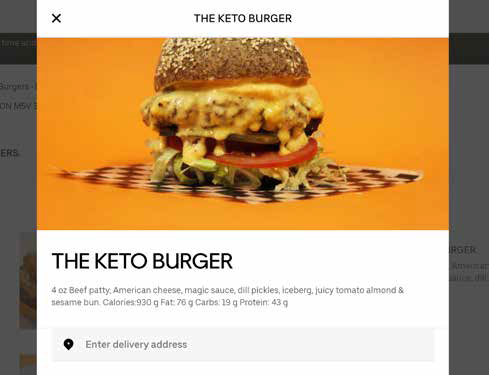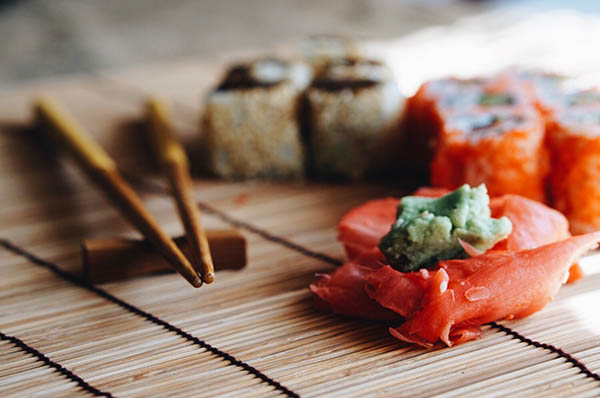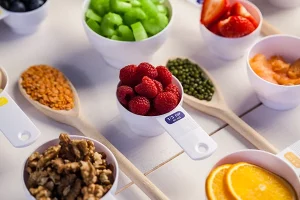It’s no secret that the traditional way people have been doing dieting doesn’t seem to hold any sway over weight-loss or weight-gain struggles. Traditional diet culture is synonymous with bad habits, destructive behavior, and an unhealthy view of the self.
The Lowdown on Keto: Lifestyle vs. Diet
What health-conscious professionals and chefs have been advocating for the past years is creating a food plan for yourself that is easy to stick to and one that can be sustained as a lifestyle vs. a short-term diet. For any restaurant or foodservice professional, catering to this growing trend in educated eaters is a key winning point. People are beginning to see that fats aren’t the problem they’ve been told growing up, and the demands for keto meals in food prep and restaurants have never been higher.
The ketogenic diet takes the form of a nutrient guide to what is good for the body vs. what to avoid with the understanding that a high fat and low carbohydrate intake is optimal in order to upkeep and gain a healthy body. There is also some evidence that a keto diet may have benefits against diabetes, cancer, epilepsy, and Alzheimer’s disease.
Ketosis
Following this rule of low carb and high fat puts the body into ketosis, a metabolic state of natural fat burning.
It’s trickier than just avoiding pasta and bread on a menu. To properly allow a body to go into ketosis, your clients need to avoid candy, soft drinks, limit fruit consumption, and cut back on legume and potatoes. It really is bringing it back to basics with dark greens and meat with healthy fats. Acknowledging that people looking to uphold a keto diet have a hard time finding items they can order is the first step of a food provider to make their life easier.
There’s plenty of evidence that low-fat diets are not helping people be healthier, and may actually be contributing to weight gain issues, whereas a high-fat diet does the opposite.
What to Offer on Your Healthy Menu
So what to offer if you’re looking to incorporate this diet group into your menu? Follow the list below:
- Seafood
- Vegetables with low starch such as asparagus, green beans, cucumbers, cabbage and cauliflower, avocado, eggplants, kale and lettuce, olives, peppers, tomatoes, and zucchini
- Cheese
- All meat selections
- Eggs
- Coconut oil to cook with is the most recommended as it can increase ketone production and metabolic rate. Olive oil is a clear second choice.
- Plain yogurt
- Nuts and seeds to add to your meal plans are recommended. Pumpkin seeds, walnuts, flaxseeds and so many more are amazing and will help regulate fat. If you want to add fruit, go for berries as they are very low in carbs. Blackberries, blueberries, strawberries, or raspberries are all amazing choices.
- Butter and cream are preferred. These are great fats with evidence that they do not have unhealthy side effects such as previously stipulated; heart disease.
- Coffee and tea
- Dark chocolate and cocoa are very healthy as long as there’s little sugar in it.
There are tons of amazing restaurants that make it their business to let people know what options they have and what their nutritional menu value is. In a case of choosing to cater to a bit more of a challenging food clientele, a restaurant menu that is transparent about the foods they have and their fat and carbohydrate content is a clear choice for a continuously growing keto crowd. A great way to highlight your healthy menu is with MenuSano, a nutrition analysis software.
Nutrition Analysis Software to the Rescue
An informed consumer should always be an obvious choice for a restaurant. At Menusano, we are the first step to that process. By using nutrition analysis software to highlight your keto menus and recipes, your health-conscious consumer will find it more satisfying to dine at your restaurant. Start a free trial to get to know MenuSano’s features and benefits.
Customer Success Stories
Keto Food Co.
Keto Food Co. saved hundreds of hours by using MenuSano’s recipe costing over Excel spreadsheets.






















